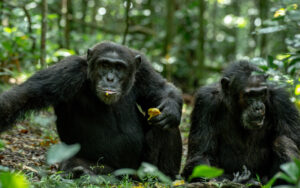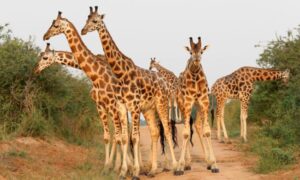Uganda’s Most Scenic and Diverse Wildlife Haven.
Queen Elizabeth National Park is Located in western Uganda, Queen Elizabeth National Park is the country’s second-largest national park, spanning 1,978 square kilometers. Established in 1952 as Kazinga National Park, it was later renamed in 1954 to commemorate a visit by Queen Elizabeth II and Prince Philip. The park is renowned for its diverse ecosystems, including sprawling savannas, humid forests, fertile wetlands, and sparkling lakes.
Wildlife and Birdlife
The park is home to an impressive array of wildlife including;
- Mammals: 95 species, such as African elephants, lions, leopards, bushbucks, and Uganda cobs
- Birds: Over 600 species, including rollers, Abyssinian ground hornbills, and various water birds
Attractions and Activities
- Kyambura Gorge: Explore the “Valley of Apes” and track chimpanzees, accompanied by beautiful birdlife and scenic views
- Mweya Peninsula: Enjoy bird viewing, hippo and crocodile sightings, and photography opportunities along the Kazinga Channel
- Kazinga Channel: Take a launch cruise and spot hippos, elephants, and various bird species
- Equator: Visit the imaginary latitude marked 0 degrees and capture memorable photos
- Maramagambo Forest: Embark on a guided walk to identify different bird species, monkeys, and other wildlife
- Game Drive: Explore the Kasenyi area and spot lions, elephants, leopards, and other wildlife
- Tree Climbing Lions: Witness the rare behavior of lions climbing trees in the Ishasha region
Getting There
- By Air: Flying from Entebbe Airport to Mweya Airstrip is a 45-minute to 1-hour journey
- By Road: Driving from Kampala via Mbarara to Queen Elizabeth National Park is approximately 5-6 hours
Accommodations options.
- Mweya Safari Lodge
- Twin Lakes Lodge
- Elephant Hub Lodge
- Buffalo Safari Lodge
Best Time to Visit
The best time to visit Queen Elizabeth National Park is during the dry seasons, from January to February and June to September, when wildlife viewing is optimal. However, the park is open year-round, and each season offers unique experiences




